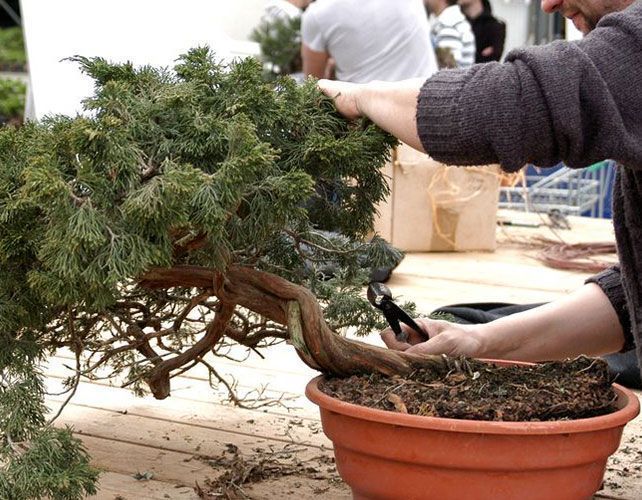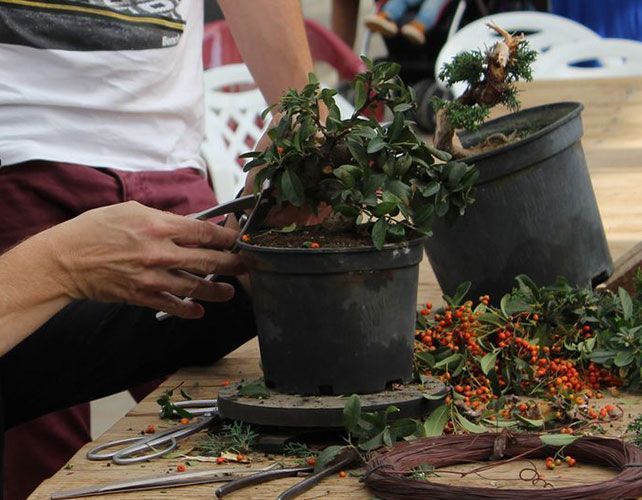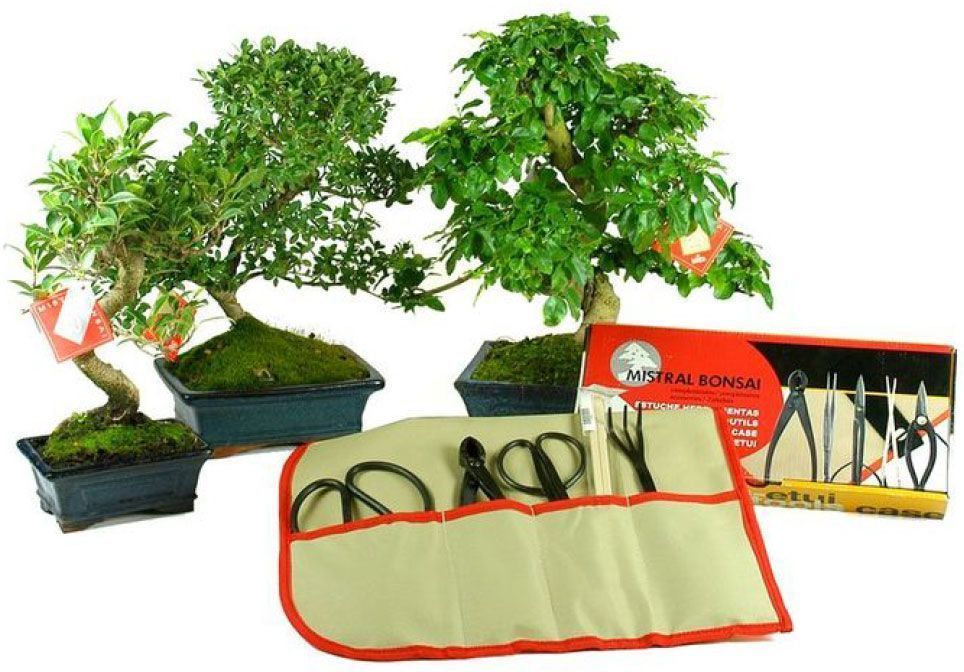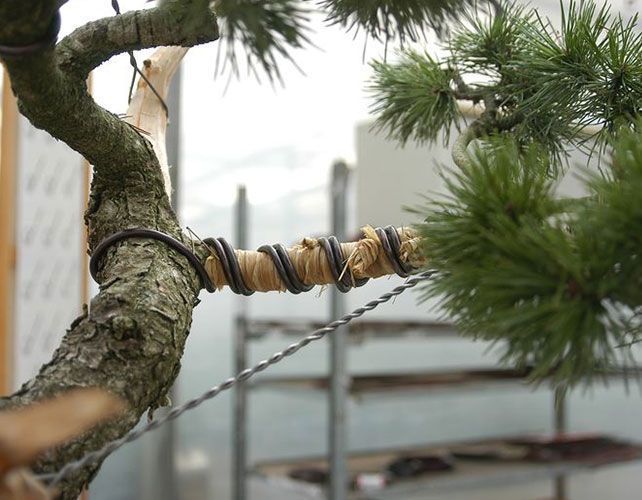
The pruning
To prune is to guide the formation of a tree. With pruning we will learn how to shape bonsai by eliminating unwanted branches (those that cross or that come out in an unwanted area of the trunk).
The best time to prune is generally towards the end of winter, when the trees are at rest and not as much sap comes out of the pruning wounds. To prune we will use suitable concave cutting tools, which make clean cuts with an easy healing. When pruning wounds are large, it will be convenient to cover them with sealing paste to ensure perfect healing.

The pinching
Pinching is the green prunning of bonsai shoots. It receives this name because traditionally the tips of the shoots were broken (by pulling them) with the fingers, using them as tweezers.
Pinching serves to direct and control shoot growth. With pinching we can increase the density of the branches while reducing the size of the leaves. We can also stop the growth of shoots that are too strong, thus balancing the vigor of the trees.


The Wiring
We use wiring to correct the inclination of the branches. Wiring allows us to utilize branches that we would otherwise have to prune. In a way, the wire replaces the force of the weight of the branches in the large trees of nature.
We will wind the wire in the branches and trunk, without tightening it too much, so that the wire does not mark the tree’s bark. It is convenient that there is a space between the wire and the branch where a sheet of paper can pass through. As the branches thicken, due to their growth, we will remove the wire before it “sticks” into the bark.
The wire that is currently used is anodized aluminum wire, old copper in color. It is an extraordinarily flexible and resistant wire. The thickness of the wire depends on the force that has to be applied to bend the branches. In general, the thicknesses range from 0.5 mm to 5 mm.
The golden rule of the wire fence is to leave no trace of your passage on the crust.
Discover the full range of available tools by clicking here.
